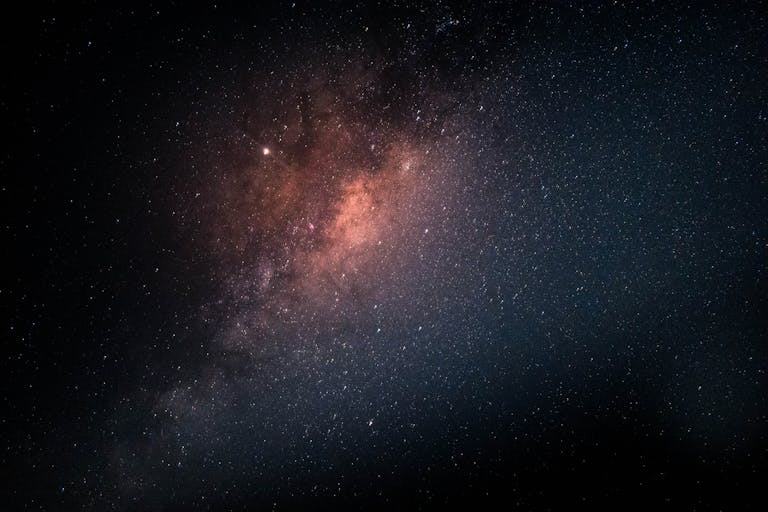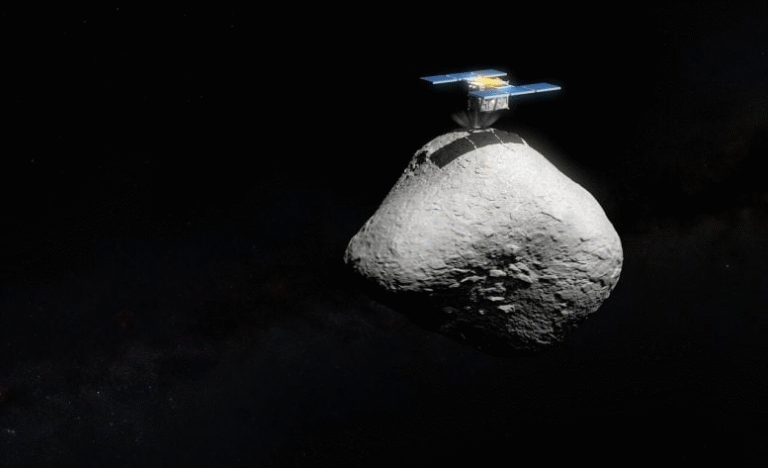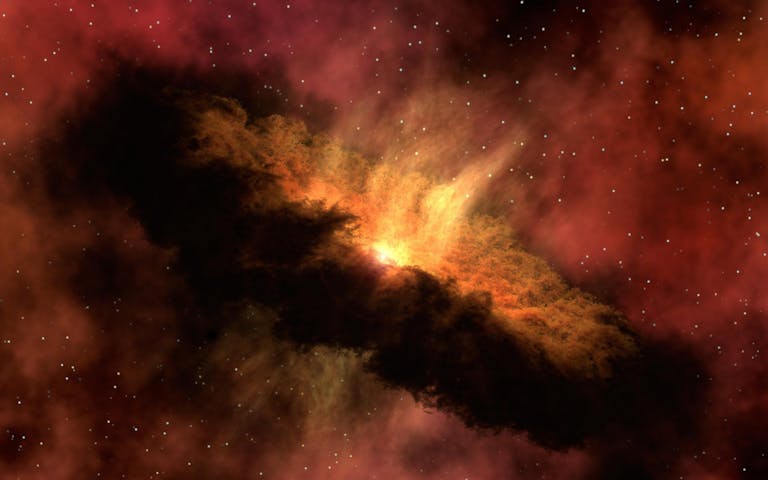Superheavy Charged Gravitinos: A New Dark Matter Candidate Under the Spotlight

Dark matter has puzzled scientists for decades. Despite over 40 years of experiments and countless theories, its true nature remains hidden. For years, the most popular candidates were WIMPs (weakly interacting massive particles) and axions, but neither has been confirmed. Now, physicists are pointing to a bold and surprising new possibility: superheavy, electrically charged gravitinos.
This idea, once only a theoretical curiosity, is gaining traction thanks to new work from researchers at the University of Warsaw and the Max Planck Institute for Gravitational Physics (Albert Einstein Institute). Their study, recently published in Physical Review Research, suggests that upcoming neutrino detectors like JUNO in China may be able to spot these unusual particles.
Let’s break down what this means, why it matters, and how it changes the game in the hunt for dark matter.
What Exactly Are Gravitinos?
To understand this candidate, we need to step back into theoretical physics.
Gravitinos are particles predicted in certain extensions of physics theories that try to unify gravity with particle physics. Specifically, they come from a framework called N=8 supergravity, developed in the late 1970s. In this model:
- The familiar particles of the Standard Model (like quarks and leptons) appear naturally.
- In addition to those, the theory includes a graviton (a spin-2 particle that would carry gravity) and eight gravitinos, which are spin-3/2 particles.
Back in 1981, Nobel Prize winner Murray Gell-Mann noted that this framework reproduced the matter content of the Standard Model — six quarks and six leptons — but with one problem: their electric charges were slightly off (shifted by ±1/6).
Fast forward to recent years, and physicists Krzysztof Meissner and Hermann Nicolai managed to fix this mismatch by extending the theory further. Their modification introduced a deep mathematical symmetry known as K(E10), which is rarely discussed outside advanced physics circles but could hold the key to unifying all fundamental forces.
The Charged Gravitino Proposal
The striking outcome of these modifications is that gravitinos — if they exist — are not electrically neutral. Instead, they are charged. Specifically:
- Six gravitinos carry charges of ±1/3.
- Two carry charges of ±2/3.
It’s these ±2/3 gravitinos that stand out as candidates for dark matter.
Why? Because they are predicted to be extremely massive — close to the Planck scale (roughly a billion billion times the mass of a proton). Being so massive makes them extraordinarily rare, which explains why we haven’t noticed them despite their electric charge. Their rarity means they don’t produce obvious radiation in the sky and thus slip past observational limits that normally rule out charged particles as dark matter.

Credit: K. Beil, Formgeber/Milde Science Communication
How Rare Are They?
The calculations suggest that there might be only one gravitino per 10,000 cubic kilometers within our Solar System. To put that in perspective, that’s like having one such particle in a volume larger than all of Earth’s oceans combined.
Because of this, detecting them is a massive challenge. Regular particle detectors are simply too small and too limited to ever catch one.
A New Way to Search
This is where neutrino detectors come in.
Back in 2024, Meissner and Nicolai argued that neutrino detectors — especially those using scintillator liquids rather than just water — could be sensitive to gravitinos. Neutrino detectors need huge volumes of material to catch neutrinos, which interact incredibly weakly with matter. This requirement of scale turns out to be perfect for attempting to catch extremely rare particles like gravitinos.
The JUNO detector in China, currently under construction, is particularly well-suited for the job.
Inside the JUNO Detector
Here’s what makes JUNO so special:
- It contains 20,000 tons of an organic, oil-like scintillator liquid.
- The liquid is housed in a 40-meter-wide spherical vessel.
- The vessel is surrounded by more than 17,000 photomultipliers, which are sensitive light detectors.
- It is placed deep underground to shield it from cosmic rays and background noise.
The JUNO project is designed to study neutrino properties (especially antineutrinos), but the researchers realized it may also be the ideal instrument to spot charged gravitinos. JUNO is expected to begin taking data in the second half of 2025.
How Would a Gravitino Be Detected?
When a superheavy charged gravitino passes through the scintillator liquid, it would produce a distinct glow along its path. This glow comes from photons emitted as the particle interacts with the liquid.
Simulations conducted by the research team showed that the signal would be:
- Unique: Unlike any known particle signature.
- Unmistakable: No background process (like radioactive decays or photomultiplier noise) could mimic it.
- Trackable: A clear line of light corresponding to the particle’s trajectory.
This required advanced simulations that combined particle physics with quantum chemistry to accurately model how photons would be produced and absorbed. They also had to factor in background processes like:
- C-14 decay in the scintillator oil.
- Dark counts (false signals) in photomultiplier tubes.
- Photon absorption in the liquid.
The conclusion? If a gravitino ever passes through JUNO, it would leave a signal so distinctive that scientists could not mistake it for anything else.
The Bigger Picture: Unification of Forces
If such gravitinos are detected, it would be groundbreaking.
- It would be the first direct evidence of Planck-scale physics.
- It would strongly support the idea that gravity and particle physics can be unified.
- It would validate the K(E10) symmetry proposal and the modified supergravity framework.
In short, it could bring us a step closer to the elusive “theory of everything” that physicists have been chasing for generations.
Why This Is Different From Other Dark Matter Searches
Most dark matter candidates — WIMPs, axions, sterile neutrinos — are assumed to be electrically neutral. That’s why the term “dark” is used; they don’t interact with light.
Gravitinos, on the other hand, are electrically charged. At first glance, this seems to disqualify them. But because they’re so incredibly massive and rare, they don’t produce visible radiation that would have ruled them out. This makes them radically different from any other candidate considered so far.
Other Detectors That Could Help
While JUNO is the leading candidate, other detectors might also play a role in this search:
- DUNE (Deep Underground Neutrino Experiment, USA): Will use liquid argon instead of scintillator oil.
- Future large underground detectors: As technology develops, even more massive detectors may be built.
These facilities could provide additional opportunities to confirm or reject the gravitino hypothesis.
Beyond the News: More About Dark Matter
Since we’re diving deep into this topic, let’s expand a bit on the broader context of dark matter research.
Why Do We Believe in Dark Matter?
Dark matter is not just a random guess. Multiple independent lines of evidence point to its existence:
- Galaxy rotation curves: Stars at the edges of galaxies move faster than they should, given visible matter.
- Cosmic microwave background: Precise measurements show more mass than we can see.
- Gravitational lensing: Light from distant galaxies bends more strongly than visible matter accounts for.
All of this tells us that there’s invisible matter making up about 85% of the total matter in the universe.
Traditional Candidates
- WIMPs: Predicted by supersymmetry, mass similar to protons. Extensive searches (like at the LHC or underground labs) have so far come up empty.
- Axions: Extremely light particles proposed to solve issues in quantum physics. Experiments like ADMX are searching for them.
- Sterile neutrinos: Hypothetical heavier cousins of regular neutrinos. Still unconfirmed.
Why This Gravitino Idea Stands Out
The charged gravitino proposal flips the script: instead of something light and neutral, it’s superheavy and charged. This brings fresh energy into a field where many scientists are frustrated by the lack of discoveries.
Challenges Ahead
Of course, the theory faces hurdles:
- The extreme rarity of gravitinos means we may need to wait years before detecting one.
- JUNO and similar detectors will have to operate flawlessly to filter out false signals.
- Even a detection would raise more questions: how do these particles fit into cosmology, and how did they survive since the early universe?
Final Thoughts
The hunt for dark matter has taken scientists in many directions, but the idea of superheavy charged gravitinos is one of the boldest yet. If proven, it wouldn’t just explain dark matter — it would revolutionize our understanding of the universe at its most fundamental level.
For now, all eyes are on detectors like JUNO, set to start collecting data soon. Whether or not they find these exotic particles, the attempt itself pushes the boundaries of science and sparks new ideas about the hidden fabric of the cosmos.





